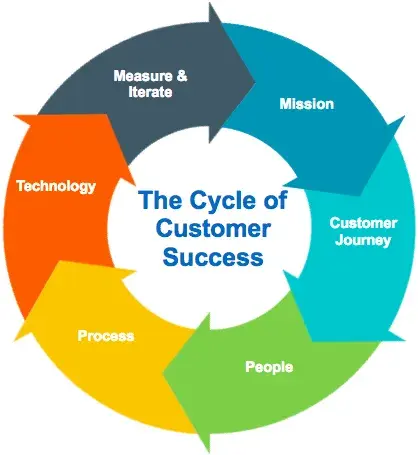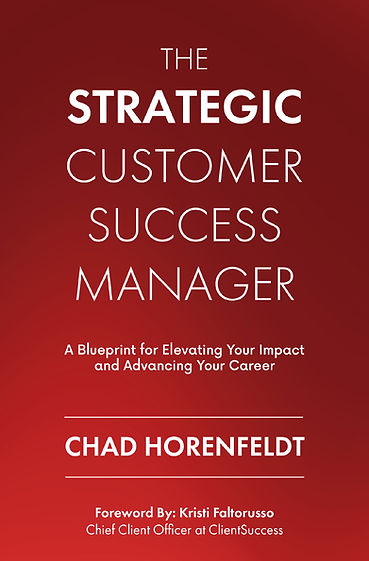The Cycle of Customer Success: A Blueprint Grounded in Reality
- Chad Horenfeldt
- Jul 26
- 3 min read
I don’t love frameworks.
In fact, I’ve spent most of my career quietly resisting them. I studied history, not management theory. I trust patterns over playbooks, evidence over abstractions.
But after 20+ years in Customer Success—and a few scars to prove it—I started to notice something:
The best CS teams I managed all followed a similar cycle.
So, I decided to document it. Not as a rigid model, but as a practical map. A cycle. Something you can actually use. Something I wish I had when I was managing 30 accounts as a CSM while I was at Eloqua.
I call it: The Cycle of Customer Success.

This isn’t another theoretical model or maturity matrix. It’s a practical, cyclical approach that can help you avoid common missteps and double down on what actually works. Because in CS, your work is never “done.”
Whether you're juggling 30+ accounts solo or leading a CS team, this cycle gives you a blueprint for scaling strategically—and sustainably.
The Six Components of the Cycle of Customer Success
Mission. Set the tone. Every CS team needs a purpose, especially when the path ahead isn’t clear. Your mission should empower action when no process or manager is present. It’s your compass—internally and externally. At Bluecore, our mission was simple: get our customers to shout about us from the rooftops. It worked.
Customer Journey. More than mapping touchpoints, this is about designing value delivery. What do your customers really need to achieve—and what are you proactively doing to help them get there? Define it, test it, evolve it. Involve your whole org and your customers themselves.
People. This is everything. Don’t just think headcount and ratios. Think hiring precision, onboarding rigor, and long-term enablement. Think career growth and performance management. If your CS strategy doesn’t start and end with people, you’re missing the point.
Process. Build it right the first time—or be prepared to fix it later. Define handoffs, success plans, QBRs, playbooks, and escalation paths that reflect your customer journey. As you scale, your processes become your culture in action.
Technology. Technology isn’t a magic fix—it’s an amplifier. Get your foundations in place before investing in tools. We didn’t build out our tech stack at Bluecore until we had a working customer journey and a basic health scoring mechanism. Then we layered in the right platforms to scale smart.
Measure & Iterate. Don’t wait to “finish” building before you start measuring. Track everything—from hiring quality to onboarding effectiveness to NPS and retention. Then use that data to improve the cycle. The teams that scale best are the ones that adapt fast and often.
Why a Cycle?
I devised customer success as a cycle because CS never stops. There’s no finish line. No “set it and forget it.”
You’ll loop through this cycle over and over, faster when you’re small, more methodically as you scale. And sometimes, the data will tell you it’s time to go back to square one.
I’ve been there. At Eloqua, we rebuilt our customer journey after reaching maturity because the numbers made it clear something was broken. That pivot helped us hit escape velocity—and later, IPO and acquisition.
This model isn’t rigid. It’s resilient. It’s not perfect. It’s practical.
Your Strategic Starting Point
Whether you're launching CS at a startup or retooling in a global org, this model is designed to flex with you. Use it to prioritize, to focus, to get aligned—and to keep moving.
Because in the age of AI and constant change, the one thing that doesn’t change is this: Customer Success is a continuous journey.
“The circle is never complete—it just keeps going.” (Yes, that was my inner Star Wars nerd coming out.)







Comments